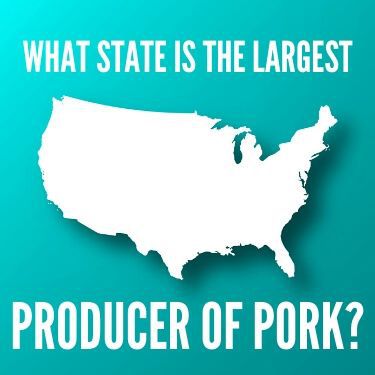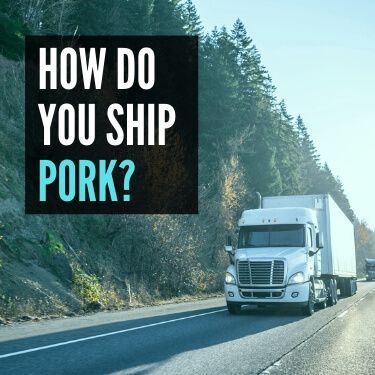Pork products are a significant and versatile form of meat, and the Pork Supply Chain is an essential part of American food manufacturing and export markets. Because of its advantages over other livestock, such as small grazing areas and the pigs’ proficiency at converting animal feed to meat, it is a crucial part of the Food Industry. Pigs also stand out because almost every part of the animal is edible, both for humans and animals alike, which makes it a fantastic investment for both small scale and factory farmers.
According to the USDA form LDP M 307, demand for pork in 2020 will rise by almost 4%, with prices averaging at $54.50 per cwt. This is 14% higher than 2019, demonstrating strong demand for hogs and consistent demand, of which the Pork Supply Chain plays a vital role. Taking the correct steps to manage it ensures consistent quality for consumers.

The largest producer of pork in the USA is Iowa, which boasted an inventory of 23,500,000 hogs and pigs in 2019. The state is also the highest exporter of pork products in the country. North Carolina and Minnesota come in second and third place, but the numbers of these states cannot be compared to Iowa. North Carolina has a hog and pig inventory of 8,900,000, while Minnesota has 8,700,000.
These numbers combined can only account for three-quarters of all pigs and hogs in Iowa, demonstrating the grip that the Midwestern State has over the industry. With over 6,200 pig farms statewide and nine company headquarters based in Iowa, it is easy to see why the impact it has on producing pork for both national and international distribution.
Across the nation, nearly one-third of all hogs are raised in Iowa, and exports totaled $2.1 billion in 2018. Here are some critical facts about pork production in Iowa, as well as statistics on exports.
With these facts and data, it’s easy to see the impact that the Iowa pork industry has not only on exports and profits but also on job creation and security across the state. As the largest pig producer in the country, the potential for success and earnings within the industry is the largest nationwide.
Are you sending pork south? Learn more about freight shipping from Iowa to Florida.
The USA is the world’s third-largest producer of pork, and to ensure it can distribute and export pork products at home, across borders, and overseas, a dependable and consistent pork supply chain is essential.
The nature of the pork supply chain is as follows:
Sometimes, Export, Wholesale, Retail, and In-Company Food Enterprise stages are skipped following both processing stages, such as the case of direct butchers, and the product arrives at the Final Consumer with no input from other areas.

Shipping pork requires several steps to ensure quality meat that is free from bacteria and similar dangers that can be present in raw meat. The US is responsible for the most pork exports worldwide, with a total value of $4.6 billion. This represents 16.2% of total pork exports internationally, and over half of the US port exports ended up in Asia.
As pork is a perishable product, exporters must take the necessary steps to guarantee it arrives at its destination in the best condition. To achieve this, the food must be in a chilled and food-safe package, which the FDA considers to be refrigerator temperature, or around 40 °F (4 °C). Similarly, frozen goods should be kept at 0 °F (-18 °C).
To further guarantee well-kept pork during transport either by airplane or freight ship, companies and exporters should pack the products away in an airtight container and insulate each product with bubble wrap, while filling the remaining space with leftover newspaper or foam.
The package should be clearly labeled ‘Keep Frozen’ or ‘Keep Refrigerated’ depending on how the pork is stored.
The cold chain is an integral part of pork supply and shipping, but this chain demands optimized management to ensure freshness to ensure the pork is of the highest quality when it reaches the final consumer. Considering the long timeframes between leaving the farm and arriving at the mean processing stage before final shipment, regardless of the end location, measures must be put in place to guarantee consistent chilling or freezing and prevent bacteria growth.
Some of these measures can include:
With modern solutions always being explored and considered to increase efficiency for any industry, another potentially useful and time-saving option could be wireless sensors. These would be supported by a cold chain database and software that can adjust the internal temperature of the container or package when needed. Rather than the supply chain encounter issues from differing temperatures at each stage, thereby risking the pork supply spoiling, any immediate shifts could be addressed to guarantee the quality of the pork upon arrival at its destination, whether shipping nationally or internationally.
With a wide variety of shipping options available, R+L Global Logistics can help with the temperature-controlled transportation of chilled or frozen goods, both domestic and global. To ensure your freight needs are met and comply with 21st-century shipping expectations, there are streamlined operations in place for both truckload freight shipping and Warehouse Management.
Using R+L Global Logistics for the Pork Supply Chain can ensure that the products arrive at the final consumer on time and in the best condition so you can continue to build your reputation as a high-quality supplier of pork products. To book full truckloads with us or get a freight rate quote, get in touch at (866) 353-7178 today.
R+L Global Logistics
315 NE 14th St., Ocala, FL 34470